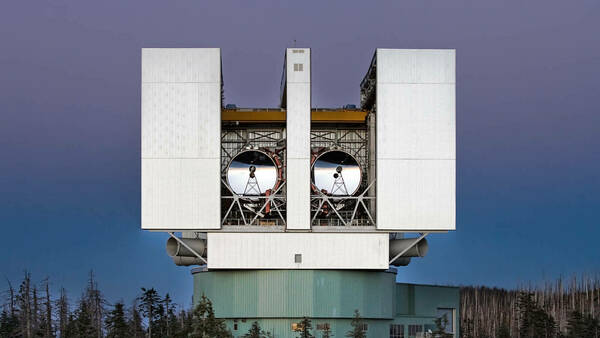Spectroscopy, Telescopes, and Spectrographs
In order to measure the amounts of elements in stars, we obtain spectra of those stars. Spectroscopy is the splitting of light into its component colors, or wavelengths. A spectrum is a quantification of the amount of light at each wavelength.
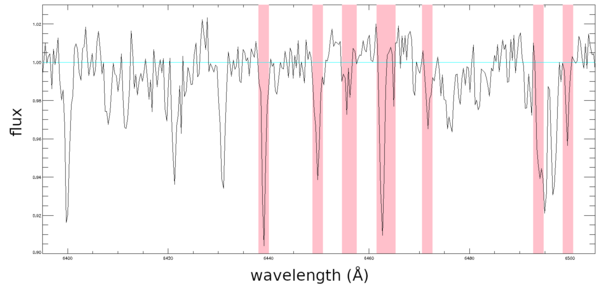
This is the spectrum of a red giant star in the globular cluster M2. It was obtained with the Keck/DEIMOS spectrograph. The pink shaded regions identify absorption lines of the element calcium (Ca). The depth of the absorption lines is an indicator of the amount of calcium in this star.
We obtain spectra from some of the largest telescopes in the world, including Keck Observatory, the Subaru Telescope, and the Large Binocular Telescope.
Keck Observatory
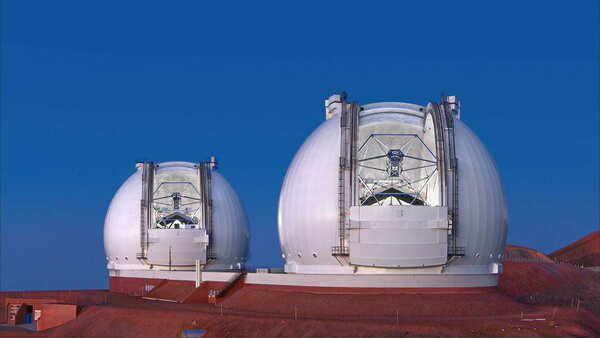
Most of our spectra come from spectrographs at Keck Observatory. The observatory on Maunakea, Hawai'i, is home to two telescopes, each of which has a mirror 10 meters in diameter. We primarily use the DEIMOS, HIRES, and KCWI spectrographs.
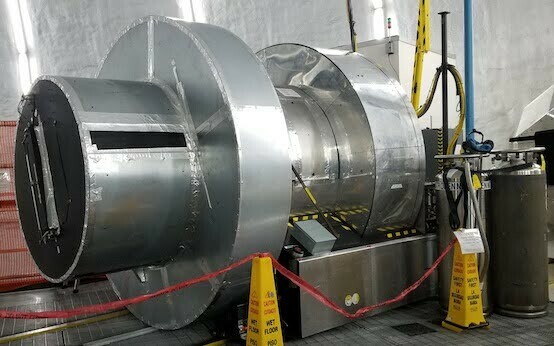
The DEep Imaging Multi-Object Spectrograph (DEIMOS) is a marvel of engineering. It is about the size of a passenger van. In fact, people routinely climb inside of DEIMOS to perform maintenance. It looks like a barrel because the whole instrument rotates to track the rotation of the night sky as seen from the Nasmyth focus of the Keck II telescope. Even though the instrument is quite heavy, the optical path is kept stable with an active flexure compensation system. The light from a star remains in the same spot on the DEIMOS camera to within 1.5 microns, even though the whole instrument is rotating and sagging under its own weight.
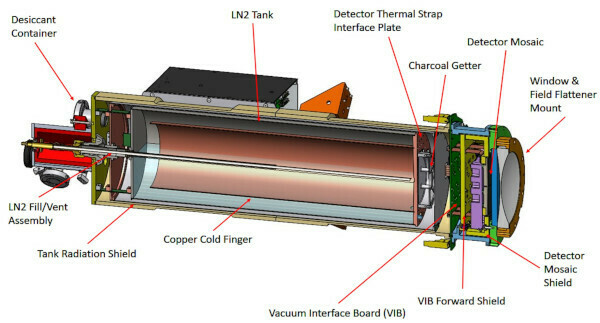
Even so, DEIMOS is aging. It is not as sensitive to light as it could be. Even worse, some electronic components have begun to fail. Prof. Evan Kirby is the principal investigator to upgrade DEIMOS. The design above is a cross-section of the cryogenic vacuum vessel that will house the new, state-of-the-art light detectors. These detectors will double the sensitivity of DEIMOS at certain wavelengths.
Subaru/PFS
Our group is very active in preparing for the new Prime Focus Spectrograph (PFS) at the Subaru Telescope, which is right next to Keck Observatory. PFS will be fully operational in August 2024. It will be a "massively multiplexed" spectrograph. That means it can obtain spectra of over 2,000 stars simultaneously. The galactic archaeology portion of the PFS survey will observe seven dwarf galaxies, the entirety of the Andromeda galaxy, M33, and the outermost regions of the Milky Way's disk.
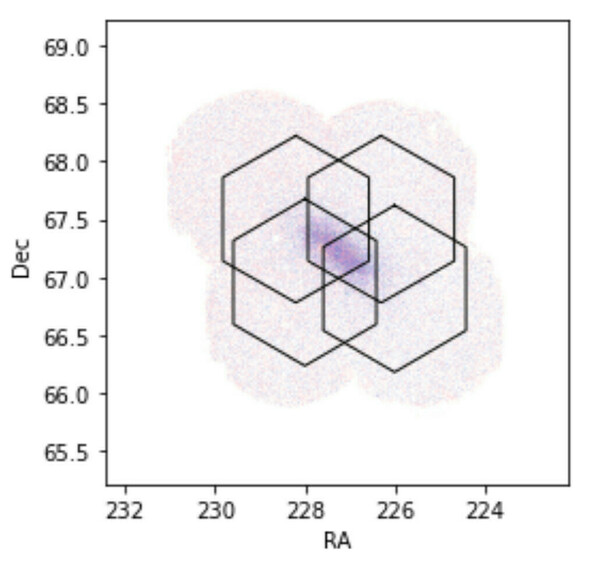
The hexagons above show PFS's field of view. The background colors show stars in the dwarf galaxy Ursa Minor. With these four PFS pointings, we will obtain spectra of 4,000 stars in Ursa Minor.
PFS will uncover new truths about dark matter, galactic chemical evolution, and the formation of large and small galaxies. Our group at Notre Dame specializes in measuring elemental abundances from the PFS spectra.
Large Binocular Telescope
Notre Dame has access to the Large Binocular Telescope through a partnership with The Ohio State University. Our group plans to use the PEPSI spectrograph to measure the compositions of stars in globular clusters to learn more about the nucleosynthesis of the heaviest elements.
